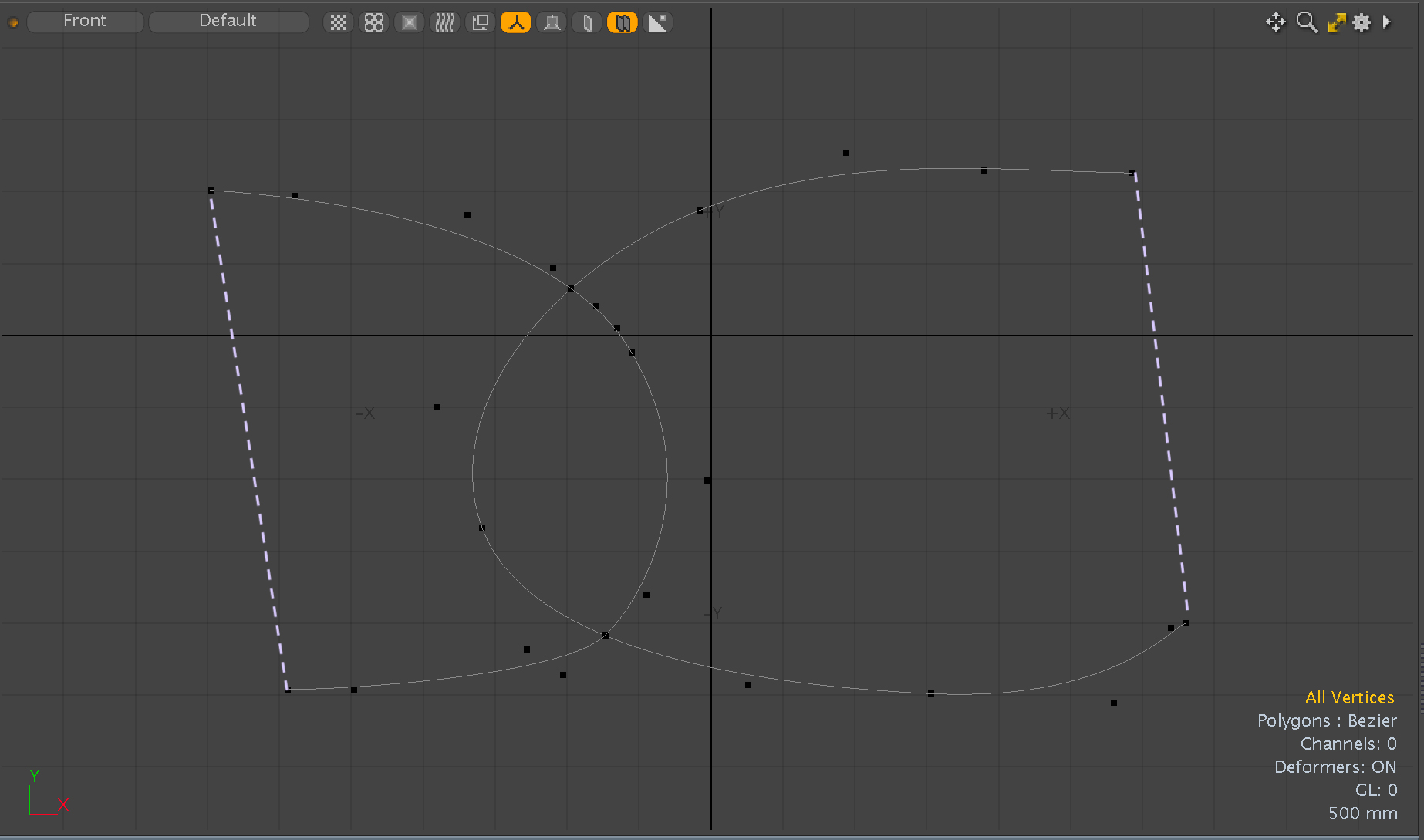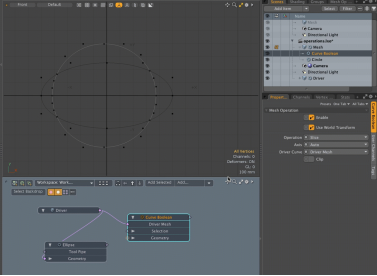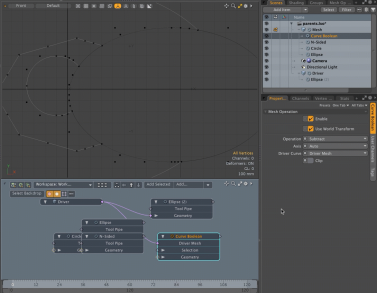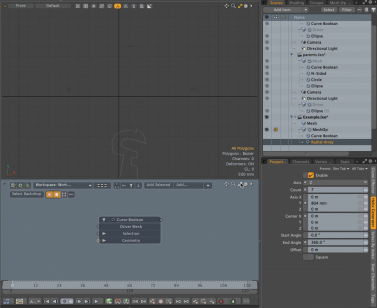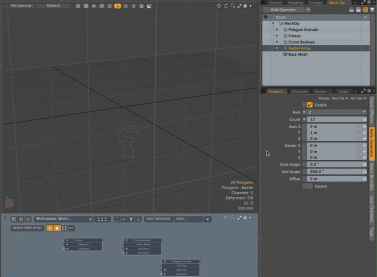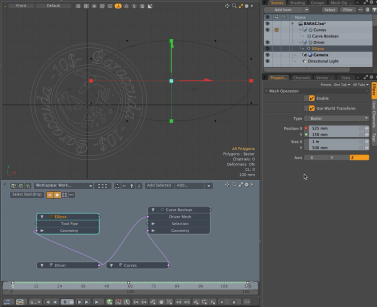Adding Curves
The Curve tool allows you to create a spline curve by clicking down a series of control points through which the curve is interpolated. This is a hermite curve type, which can be very useful for creating modeling guides, quickly roughing out a shape, or setting up an outline for lofting with the extrude, lathe, or other multiply tool.

Activating the Curve Tool
| 1. | Activate the Curve tool in one of the following ways: |
• In the Basic sub-tab of the modeling toolbox, right-click the Pen ![]() tool to reveal additional tool options, and select Curve.
tool to reveal additional tool options, and select Curve.

• In the Curve sub-tab of the modeling toolbox, click Curve.
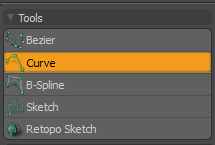
• In the menu bar, under Geometry > Curve Palette, click Curve.
| 2. | Click in the 3D viewport to position your control points. |
Adding new control points to the curve is simple. Click anywhere on the screen without selecting an existing control point. This adds a new control point to the curve.
Note: The new control point is added after the currently-selected point, so if you want to add a point to a specific location on the curve, first select the point before it.
| 3. | Once you have created several control points, you can click directly on an existing control point to drag it around, allowing you to change the shape of the curve. |
Tip: To create a closed curve, right-click on the first control point. Modo adds a curve segment between the first and last control points.
| 4. | Drop the tool by pressing the Space key. |
Editing a Curve
Once you drop the tool, interactive editing within the tool itself is lost but you can re-activate the editing ability by selecting the curve in Polygons selection mode.
For more information, see Polygon Selection Mode
Tip: You can convert selected curves to either a Adding Curves, B-Spline, or Bezier curve type. For more information, see Curve Convert
Curve Properties
You can find the Curve tool's properties in the bottom left of the UI.
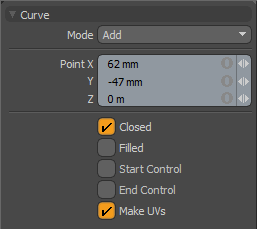
|
Mode |
Allows you to change the behavior of the cursor. The following options are available: • Add - Adds a curve. This is the default setting. • Edit - click-and-drag any of the control points along the curve to change the look to the desired shape. • Delete - Click any of the control points along the curve to remove it from the B-Spline. |
|
Point X, Y, Z |
The X, Y, and Z values of the currently-active point can be set precisely by typing in the desired 3D coordinates. |
|
Closed |
When enabled, adds an automatic curve segment between the first and last control point positions, producing a closed curve. |
|
Filled |
When the Closed option is enabled, you can enable the Filled option to create a renderable flat surface that is defined by the outlining curve itself. The resulting surface can be tagged as a polygon for adding material definitions. |
|
Start Control |
Converts the first point in the curve to a control point that does not contribute to the actual curve length, but acts as a handle so that the curvature at the new first point can be modified. When activated, the curve length from the control point to the next point is drawn in the handle color to indicate that it's no longer part of the geometry but simply a handle. |
|
End Control |
Converts the last point in the curve to a control point that does not contribute to the actual curve length, but acts as a handle so that the curvature at the new end point can be modified. When activated, the curve length from the control point to the next point is drawn in the handle color to indicate that it is no longer part of the geometry but simply a handle. |
|
Make UVs |
Activates auto-generation of UV texture coordinates along the curve. |
Curve Booleans
Curve booleans allow you to create complex 2D shapes using curve tools and then create a system of booleans to convert your 2D curves into 3D models. This tool can be used in both direct modeling and procedural.
Direct Modeling Command
You can run the curve.boolean command to apply the curve boolean tool to selected curve polygons in an active mesh.
| 1. | Click on the Edit tab on the left hand side. |
| 2. | Under Booleans & Drill, click the Curve Boolean button. |

Procedural Modeling Mesh Operator
The Curve Boolean mesh operator is available in the Edit category of the Mesh Operations.
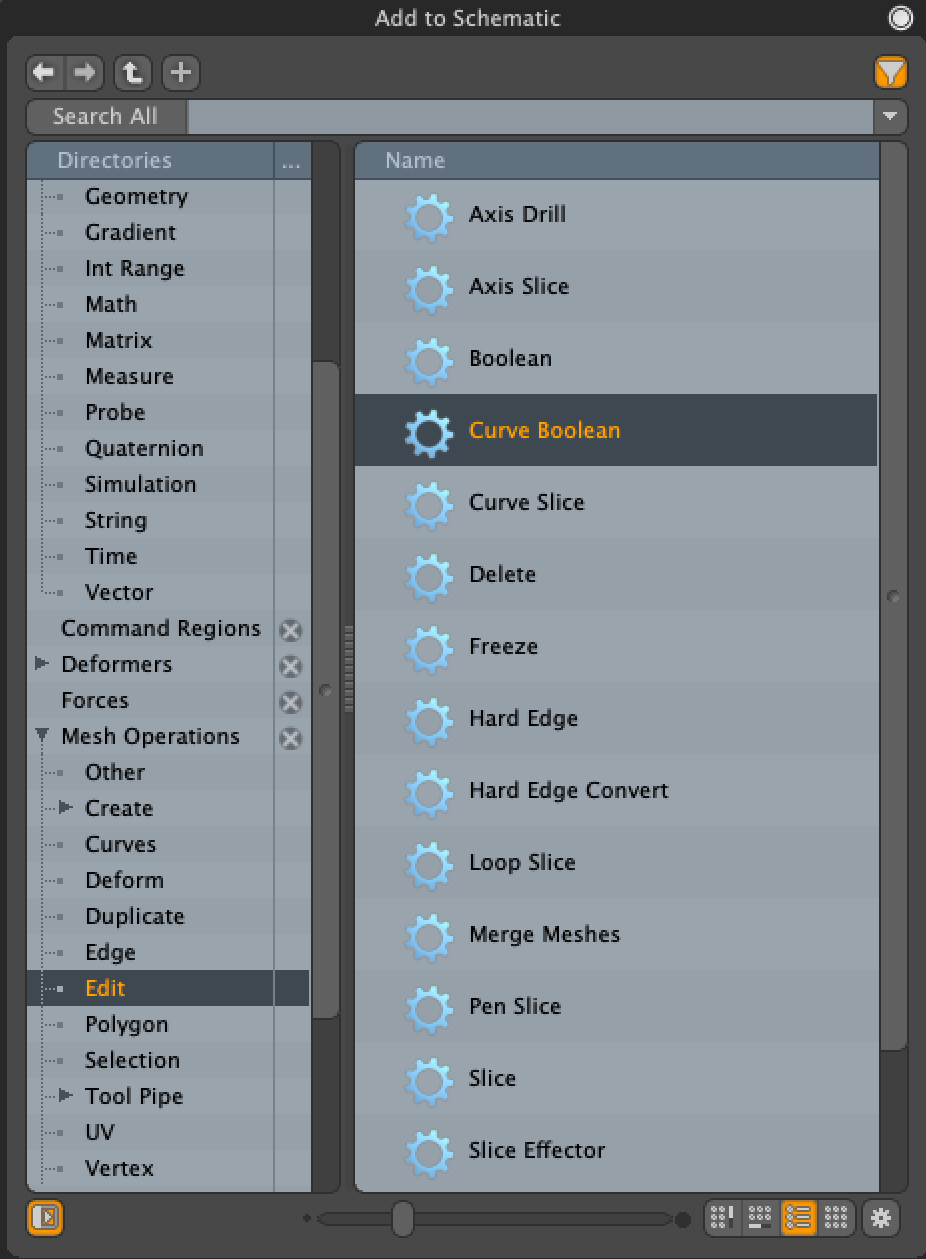
Options
Just like with regular booleans, there are four types of curved boolean you can create: Slice, Union, Intersect and Subtract.
Operation
Slice - allows you to overlap multiple curves and create new control points where the curves intersect.
Union - allows you to merge multiple overlapping curves into one shape and remove any overlapping curve segments.
Intersect - allows you to overlap two curves and then delete anything that exists outside of the overlap.
Subtract - allows you to use a curve to remove segments of another curve and can be used to cut out shapes from a base mesh.
Axis
Here you can specify the axis which defines the 2D plane for the boolean operation. Auto is the default mode, which computes the fitting plane from point positions of active curves.
Driver Curve
Unselected Curve operates selected curves by unselected curves in same mesh item.
When mode is Union and all curves are selected, curve boolean makes union curves with all selected curves.
When Driver Mesh is set, curve boolean operates selected curves in active mesh by curves in specific separated mesh item.
Driver Mesh Item
A driver mesh is a mesh that is used to create, or drive, the boolean.
Choose a mesh item with driver curves from this list when Driver Curve is Driver Mesh. If you're going to be adding multiple drivers it is recommended that you use the schematic viewport, because it keeps organization a bit easier and means you don’t have to keep jumping between mesh items.
Clip
When Clip is enabled, the curve boolean cuts the active curves. It does not append curve segments from driver curves.
Include Children
When Include Children is enabled, all child mesh items under the Driver Mesh Item are added to the driver list. This is another way to specify multiple curves in separate mesh items to the driver list for the command version.
Merge Curves
When Merge Curves is enabled, the curve boolean joins split curve segments into a new curve polygon. This applies to Polyline and Bezier polygon types. Curve and B-Spline types are not merged so as to maintain sharp corners.
Close Open Curves
When Close Open Curves is enabled, the curve boolean treats opened curves as a closed loop by connecting the 1st and last points. This is useful for applying Subtract or Intersect to opened curves.
